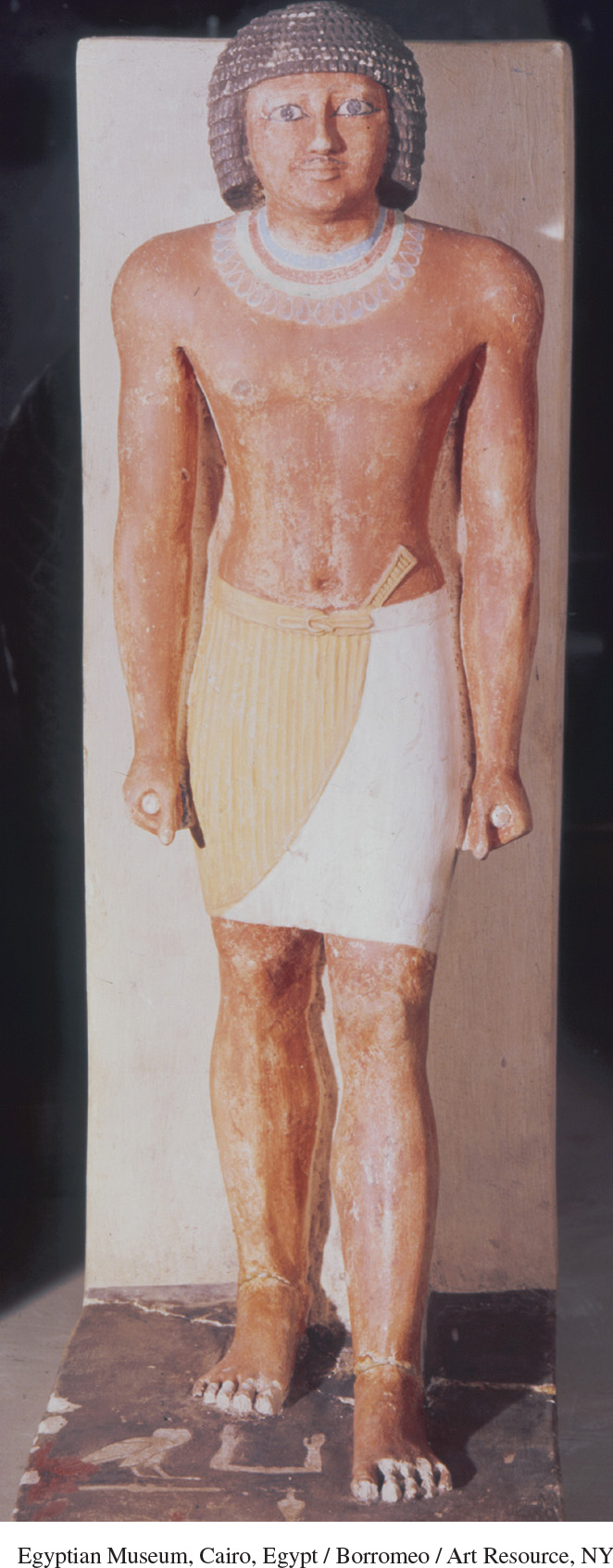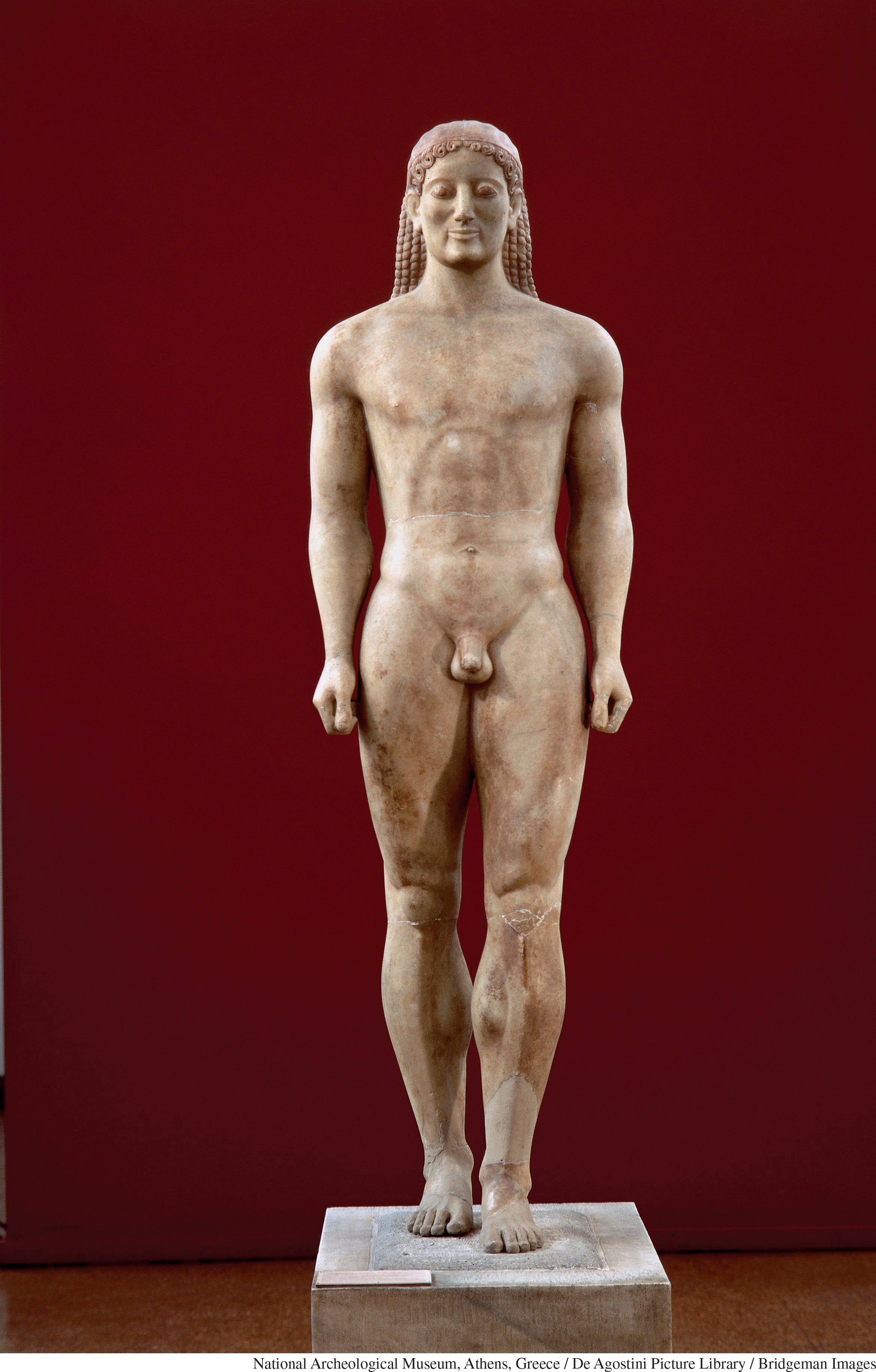Seeing History: The Shift in Sculptural Style from Egypt to Greece


As Greek civilization revived during the Archaic Age (750–500 B.C.E.), artists took inspiration from the older civilizations of Egypt and the Near East, with sculpture in particular emerging as an important mode of cultural expression. Greek sculptors carved freestanding kouros (“young male”) statues whose poses recalled the Egyptian style that remained unchanged for two thousand years: an erect posture, a striding leg, and a calm facial expression staring straight ahead. And yet important differences, both religious and stylistic, exist between Egyptian statuary and the Greek sculpture influenced by it.
Kaemheset (shown on the bottom) held a high government position during the Old Kingdom as Egypt’s chief architect and supervisor of sculptors. Croesus (on the top) was a warrior from Athens who died in battle; the inscription on the base of his statue proclaimed: “Stand and mourn at this monument of Croesus, now dead; raging Ares [the Greek war god] destroyed him as he battled in the front ranks.” Both statues were painted in bright colors (traces of red survive on Croesus’s statue); Kaemheset’s lively decoration remains because it stood inside his closed tomb, while Croesus’s stood outside. Croesus’s statue differs from Kaemheset’s in that it portrays him nude, even though warriors went into battle wearing armor. What do you think could have been the reasons for placing statues inside or outside tombs and for portraying their subjects clothed or nude?
Look more closely at the details of the figures—musculature, hair, hands, facial expression, stride. What stylistic similarities do you see? Art historians have argued that, despite the similarities, the kouros statues of Greece’s Archaic period already show signs of the increasing naturalism and idealization of the human body that would characterize the later Greek classical style. What evidence do you see of that in the differences between the two sculptures?
Question to Consider
What cultural factors do you think could account for Egyptian statues keeping the same style over time, while the style of Greek statues changed?